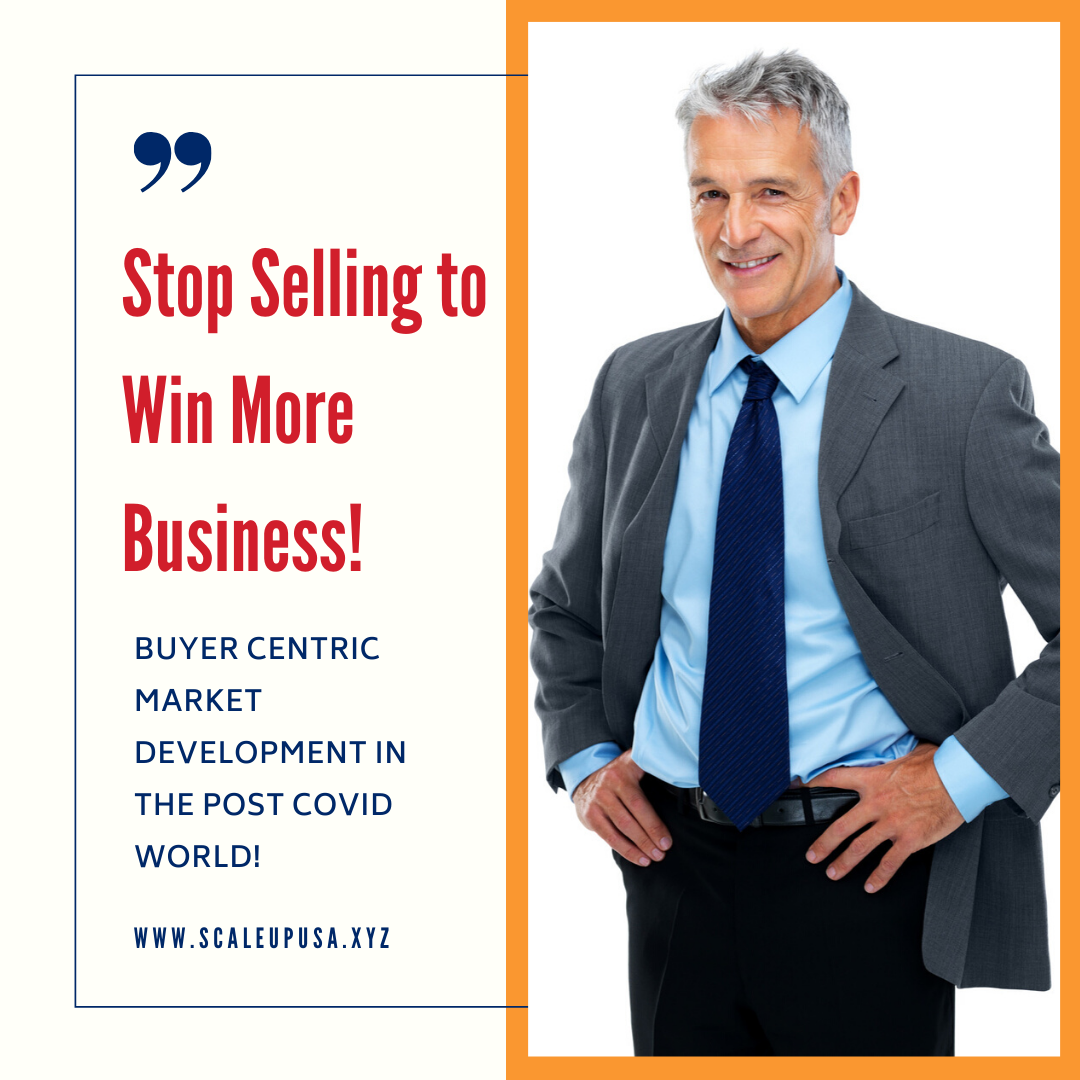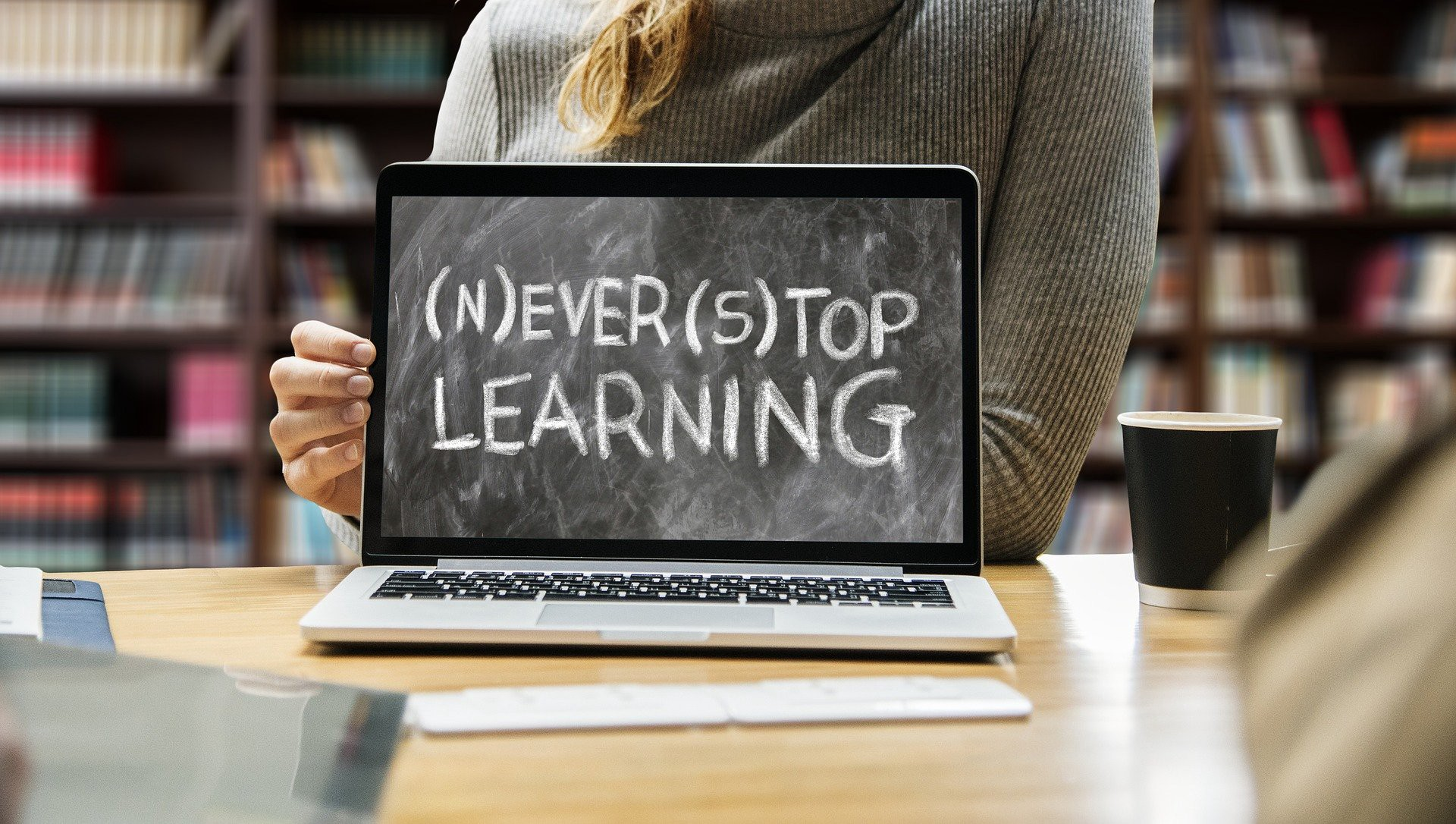MARKET, BUSINESS, AND SALES DEVELOPMENT
HOW TO BUILD AND EXECUTE GROWTH STRATEGIES? A STEP BY STEP GUIDE FOR CEOs, CROs, AND CMOs.
HOW TO BUILD AND EXECUTE IT? A GUIDE FOR CEOs, CROs, AND CMOs

Even before the COVID crisis hit in the sales world, the sellers and buyers played a vicious cat-and-mouse game. The sellers pushed online ads, users block them. Sellers placed TV ads, viewers skip them. Sellers send marketing emails, receivers moved them to junk folders. Sellers made sales phone calls, and receivers hung upon them. You get the point. But the important question was WHY?
In a buyer-seller relationship, the buyer is in full control, yet even today, most corporate sales programs are developed by sellers for sellers, are unimaginative, interruptive, and frankly unwelcome by large buyers like me.
It was increasingly difficult to secure face-to-face corporate sales meetings pre-COVID. And when you met your prospect with much difficulty, 9 out of 10 sales calls would be a total waste of time.
Selling as we know it was dying. Now in the upcoming post COVID world, selling as we know it is dead!
“Change is inevitable. Growth is optional.” — John Mazwell
The post-COVID world is digital, remote, touchless, and ruthless. Gone are the client meetings, flashy events, group demos, and late-night dinners with prospects. The buyers we deal with don't want to meet the sellers face-to-face.
“God knows where the salesperson has been before, and what strain of COVID he is carrying, I am done with physical meetings with sellers” One large buyer told me.
This is now. What will be the future? Our models suggest that the digital culture is here to stay, at least in part, as it is safer, cheaper, fairly effective, and now even piloted by both buyers and sellers. The big question is how will the companies, their CEOs, Chief Revenue Officers (CRO’s), and Chief Marketing Officers (CMO’s) adapt to the new normal.
“In any given moment we have two options: to step forward into growth or step back into safety.” — Abraham Maslow
My name is Nitin Pradhan, and I was a first-term Obama administration appointee and the federal CIO for the US Department of Transportation (US DOT) where I provided technology leadership, vision, strategy, policy, and oversight for US DOT’s more than $3.5 billion annual IT investment portfolio — the 6th largest in the federal government.
As a recovering CIO/CTO, the offices I led bought billions of dollars worth of technology products and services. I have had every kind of sales pitch, presentation, pricing, agreement, and negotiation thrown at me. And through these hundreds (if not thousands) of sales pitches and the subsequent buying patterns, I learned what works and what does not. We took all this knowledge and created a “buyer-centric” Corporate and Government Sales Accelerator Program and the Market Development Program for companies in the B2B and B2G sectors. Our approach was relevant and impactful pre-COVID, now it has become an absolute necessity.
This article provides some key insights, to start building the capacity, capability, efficiency, and effectiveness of your sales organization to survive and grow in the post-COVID world.
“The future is already here — it’s just not very evenly distributed.” — William Gibson

Buyers want sellers to stop constantly nagging, harassing, and interrupting them. Instead, they want sellers to focus on delivering “value,” even before selling any product or service!
Buyers want to learn about new research, developments, innovations, transformations, and business models in their industry and marketplace. They want this knowledge in a non-sales, video-based, micro-learning format, 24X7, on-demand, and free.
These are not cheap webinars or fireside chats designed to capture email addresses to spam the buyers later or badly recorded videos posted on YouTube probably appearing next to a “dancing cat.” Nor are these the series of typical two minutes sales pitches on sellers’ websites that are delivered sub-optimally across the world. There is a lot of free “sales” information available on the Internet. But what about valued, actionable knowledge for free through an independent, neutral, third party that buyers can trust? That is completely missing for the buyers. So buyers subscribe to “neutral” research and advisory firms providing market research, market analysis, and product reviews. Unfortunately, as buyers, we have found that this information is mostly outdated, inaccurate, and costly to procure, leave alone the fact that it is presented in textual format when the whole world has moved to video format.
“What differentiates sellers today is their ability to bring fresh ideas.” — Jill Konrath
Sellers want to sell more with reduced sales costs to make more revenues and profits! What the seller really needs is to increase the capacity, capability, efficiency, and effectiveness of their sales ecosystem. While many have managed to automate marketing with CRM and other systems, making sales calls, the most important and costly sales function is still a manual activity. This is a major bottleneck.
Today’s products and services are complex, requiring qualified technical sales teams. These don’t come cheap nor are they readily available. This leads to a shortage of salespersons, territory coverage, and lowering of quality and consistency of sales pitches — which the buyers, anyway hate as they are sales focused. So, what is the solution?
Today, where I live in Washington DC, a good quality sales director's salary ranges anywhere from $150–250k a year, add to it the pre-sales technical support, office infrastructures, distributors and resellers commissions, travel and entertainment and high growth companies are now looking at 40–45% of total sales revenues as cost of selling. Shockingly high! This number has to come down for companies to earn healthy profits. How do you do it?
We do it by what we call is the digitization of the business development process discussed below!
“Change before you have to.” — Jack Welch

If you are a CEO, CRO, or a CMO, ask yourself this important question — is my sales program operating strategically or tactically? In an ideal world, strategy will come before tactics. Unfortunately, most will find that their sales teams are totally tactically driven. You will know if you are tactical if your sales program is constantly focused on the nitty-gritty of sales closing, is coming under stress for meeting revenue targets, or potentially has a high churn of salespersons. Therefore, talking with seasoned executives of startups and mid-size companies we came up with a list of strategic selling “objectives” they would like to focus on for their companies in the post-COVID world. We then crafted a digital program that will address these objectives:
“ A vision without a strategy remains an illusion.” Lee Bolman.
Second, as part of our Market Development Program, we critique sales pitches and demos for companies to make them “buyer-centric.” We find there are typically three issues with most sales pitches:
While the seller is pitching the product for the 100th time, the buyer is typically hearing the pitch for the first time. Give the buyer the time and space to absorb the knowledge at their own pace. You can’t do this well face to face. You need new mechanisms to achieve this.
As a buyer, my experience has been that most sales pitches do not rate high on any of these above three criteria. In fact with the experiments we have done with different salespersons from the same company selling the same product or service, with the same pitch deck, the delivery was sometimes so different that it was difficult for us to comprehend if the same company product was being pitched! It is not that one sales pitch was substantially better or worse than the other, but that they many times had elements of “genius’ that needed to be consolidated and “lows’ that needed to be eliminated completely.
“Strategy is a commodity, execution is an art.” — Peter Drucker

According to Forrester, anywhere from 66–90% of a customer’s journey is self-directed. This means mostly the buyers find you the seller!
The only way to achieve what both buyers and sellers want is to ensure that the buyers take the initiative on their own to learn about the seller and contact them — because the buyers want to and not because they are forced to by the seller! It is time to embrace permission-based microlearning technology and automation and digitize the entire sales pitch process and deliver it in a way that corporate and government buyers actually want to actively engage with.
We developed such a market development and demand generation program which includes proven methodology, tools, techniques, and a technology platform to do this. Together, with the seller we precision target and educate their corporate and government buyers digitally, on the company’s new business models, innovations, and disruptions happening as a result of their transformative products, platforms, and services, free of charge to the buyers using our sophisticated, video-based, neutral, non-sales platform.
Digital sales pitch automation is the key. Delivering it in a self-learning format via a neutral platform is essential!
We do this for our client companies and deliver such consolidated, quality pitches through digital, micro-learning, 24X7 to prospective buyers on behalf of our clients making sure to not let the buyer feel that the process is sales driven.
“The best marketing doesn’t feel like marketing.” — Tom Fishburne
The key to smart business development is market development (the creation of new markets) and not sales development (selling to existing markets). Most companies, unfortunately, focus their sales effort on sales development because it is easier to identify and sell to such markets. However, such existing markets are typically tapped out or have heavy competition for penetration. Creating new markets is difficult but more rewarding.
Take the example of a large LiDAR company we are currently discussing our market development program with. Their existing market is defense and transportation. But that is where all other LiDAR companies are focusing their sales dollars. There is probably potential to sell LiDAR to all kinds of industries like Agriculture, Biology and conservation, Geology and soil science, Atmosphere, Law enforcement, Mining, Physics and astronomy, Robotics, Spaceflight, Wind farm optimization, and Solar photovoltaic deployment optimization. But doing this is costly, time-consuming, and resource-intensive. So, companies don't do it. Our digital, microlearning-based market development approach does wonders here. We design our program with three novel approaches combined into one:
Our goal is to help our client businesses and their sales teams create an automated, digital, affordable, scalable, and impactful marketing, sales, and market development “pitch” for securing national or international customers. This approach is based on the ALITCB model (Awareness, Learning, Influence, Trust, Champions, and Buying) “edusales” process developed by ScaleUP USA.
Additionally, the Market Development Program is also capable of enhancing the client's partner ecosystem as well as building a startup accelerator program around its products or services. This program is based on the latest buyer-driven marketing approach which enables our client companies to do their market development, prospecting, qualifying, and community building through a digital, comprehensive, educational pitch to produce what we call is “filtered and educated leads.” The program can be targeted at federal, state, and local governments, large corporations, small and mid-size businesses, as well as the startup ecosystem for buyer awareness, education, and training in the US or globally and addresses the nine strategic objectives mentioned in step 1.
“Winning isn’t everything, it’s the only thing.” — Vince Lombardi.